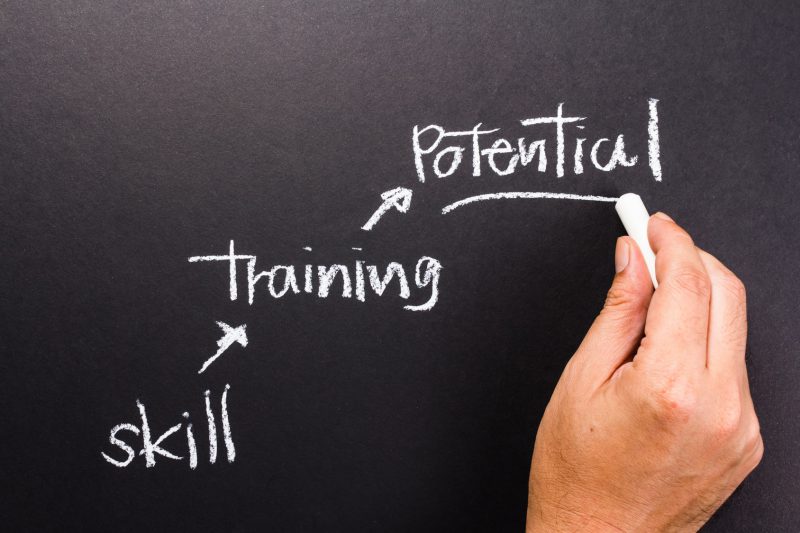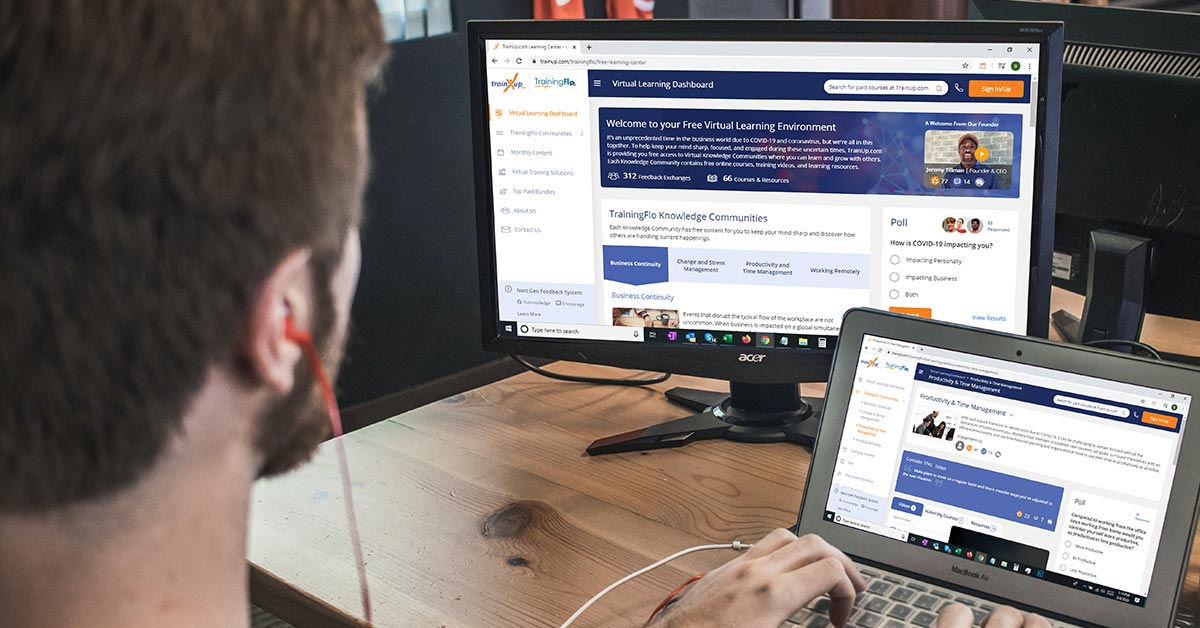Once a CFO asked a CEO, “What happens if we invest in developing our people, and then they leave us?” The CEO answered: “What happens if we don’t, and they stay?” BAM! Nobody could ever say it better than this CEO. The question is…When employees leave your organization, does that mean you wasted your training dollars?
Of course not. Investing in people’s skills and training means you will have more productive and engaged employees. And if they leave (which is always a possibility), they will probably leave on good terms and perhaps as strategic partners.
According to a 2017 Gallup study “State of the American Workplace”, only 33% of US workers are engaged at work. Therefore, you can’t afford not to invest in the personal and professional development of your employees. John P. Kotter reported that organizations that invest in a culture of professional development can outperform the competition by 500% or more. That’s a comfortable return on investment, isn’t it?
Training skills are essential in the modern business organization. Today’s savvy businesses know that skills training is an absolutely vital function because people are their most valuable asset. Making the most of this asset is what training is all about.
However, a survey conducted by the global talent management company Lumesse found that more 40% of HR leaders believe that employees would not seek help from HR if they needed to develop new knowledge or skills quickly. Read more if you want to find out about eSkill’s analysis on skills training and how to plan it to have the desired results.
5 Questions to Answer Before Starting a Skills Training
It all starts by performing a skill gap analysis/performance gap which will help you identify the professional development your employees need. Here are the 5 questions that need to be answered before implementing the action plan.
- Why does the employee need the training?
- What skills need to be learned?
- When will the employee need these new skills?
- Where should the training be conducted?
- How should the new skills be taught?
The Action Plan You Need Before Starting a Skills Training
Step 1. Design the skills training based on both the organization and the employee’s goals
Designing a training course requires the mixing of a large number of ingredients. We need to think about what skills will bridge the performance gap; we need to find trainers who are both knowledgeable and able to deliver their knowledge well; we need to know what will interest the trainees; we need to know what results the organization is looking for; and, when we’ve designed our program, we need to be ready to change it completely if it becomes clear that we need to do something entirely different instead.
Step 2. Agree and define the employee goals and targets
Define exactly what skills need to be learned and offer flexible learning options. Usually, developing new skills and getting new certifications require a lot of energy and time from employees and might make them feel overwhelmed. Companies must respond by offering on-demand mobile solutions, and remote training programs.
Step 3. Match the design with the employee’s learning style
You can never be absolutely certain that the training needs you identify for a person or a group will be solved by one particular kind of training. Even if you could design a perfect match between needs and solutions, a person may still be unwilling to learn, in which case the match will fail. If a person needs leadership skills, is it better to send her on an outward-bound course to climb mountains or have a series of chats with the Managing Director? If a person needs confidence-building, is it better to send him to an Assertiveness course or coach him after each meeting? Take into consideration the employee’s learning style and match the skills training to that.
Step 4. Break down the knowledge transfer into actionable steps
A job or skill can be broken down into the following component parts:
- Identify the skill needed.
- Find a compelling reason for how that skill will benefit you and others.
- Learn the steps and sequence needed to master the skill.
- Ask others for useful tips and tricks they related to that skill.
- Practice
- Share any tips or shortcuts you develop yourself.
After breaking down the learning process into manageable chunks, focus on the outcome. Of course, leave room for intuition, improvisation and spontaneous fun. Be sure to provide the employee feedback, and, if appropriate, invite customers and other stakeholders to participate in giving feedback on the skills being learned as well. Just be sure to avoid information overload.
Step 5. Encourage your employees to state their career aspirations and own their career development
Help employees customize their career path and directly control their learning. One-size-fits-all no longer works. Organizations need to rethink the ways employees learn, and match different learning styles with different tools. For example, Millennials use cell phones, computers, and video game consoles, so they expect to use these technologies to support their learning activities.
All in all, your business is nothing more than the collective energy and efforts of the people working with and for you. If you want to make your business better, invest in your people. Use skill assessments not only to improve your company’s talent recruitment and candidate selection, but also employee training. These training assessment tools allow you to evaluate and screen your employees’ training needs, as well as identify the ongoing training needs for specific positions and more advanced skill levels. Nowadays, your company depends on your employees’ success in planning, developing skills, transferring knowledge and reaching their personal goals.

















Leave A Comment